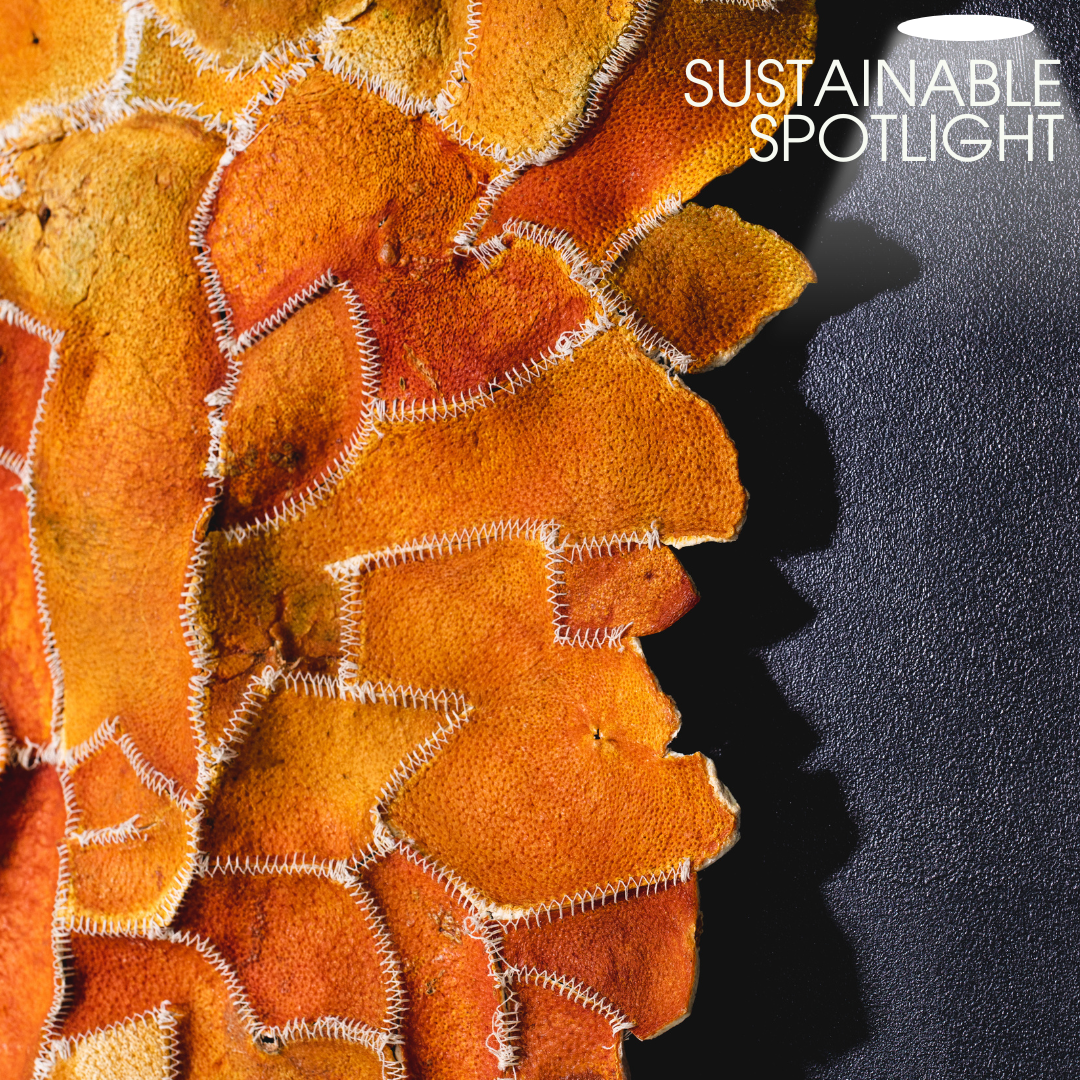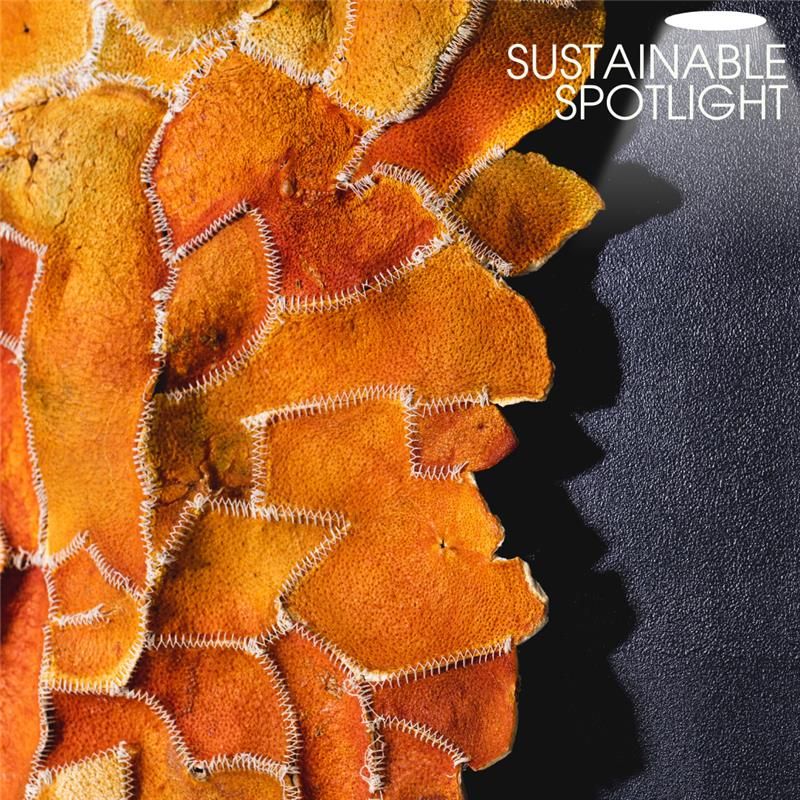Sustainable Spotlight: Pendant Peel


What is the material's composition?
The material composition from waste orange peels includes pectin, cellulose, and soluble sugars derived from the peel, segment membranes, and seeds. These components are utilised in different ways to create various materials. The pectin is used as a binder with dried peel to create a composite. The cellulose in the waste is useful for making paper and card materials. The leather-like material is composed of only orange peels which are sewn together with recycled thread. These materials are designed to be durable yet biodegradable, maximising their functional lifespan while ensuring they return to the environment without causing harm.
How did you create the concept for this product?
The concept was inspired by the potential of local, natural waste materials, specifically orange peels, which are abundant and often discarded as waste. A key part of the material development is focused on reducing reliance on alternative binding agents and substrates to maximise the inherent properties of the materials, without putting a strain on
other resources and supply chains.
Orange peel has a warmth to it due to its colour and fragrance. I wanted to lift this warmth and show its texture through lighting but at the same time I wanted to explore the materials potential in terms of malleability, transparency, scale and strength.

How long did it take you to figure out how to make this material? Was there a lot of trial and error?
I have been working with orange peels for more than 15 years and have always been fascinated by its properties during and after the drying process. Developing the material involved extensive experimentation, particularly with drying times and environmental variables such as temperature and humidity, which affect the peel's flexibility and mouldability. Discovering the optimal conditions of its leather-like quality required iterative testing to understand and control these factors. Initial iterations included wrapping peels around basic forms with tape and elastic band to understand how it behaved. The behaviour of the drying also depends on the variety of orange and how old it was before it was used for juicing, these distinctions are down to the thickness of the pith (the white part of the peel). Once I understood these qualities and factors, I was able to explore ways of scaling up which led me to sewing them together. Each piece of orange is measured and cut to size, and patchworked together piece by piece.
What is the lifespan of this product?
Surprisingly, the material has a relatively long life span due to its natural properties. I still have dried orange peel from almost 20 years ago and it is still durable.
Where do you source your materials to make this product?
The waste orange peels are sourced within the local borough; from fresh juice stalls, supermarkets and grocery stores that have fresh juicing machines. This approach not only addresses local waste streams but also reduces the environmental impact associated with long-distance material sourcing.
What uses has this material currently got? What are its real-life applications?
Current applications of the leather-like material include lighting and wall pieces. Other applications could include products and designs with a leather-like quality suitable for items such as wallets, bags, and similar accessories. I am currently exploring other applications and ways of working with the peel.
What uses do you see this material having in the future? To what scale can this product be used?
The concept focuses on decoupling from industrial production into more localised crafted products such as lighting and objects, and it is not intended to be scaled up to exist as a mass-produced alternative in industrial design or fashion. Decentralising from industrial processes emerges as a counter-method to the millions of tons of orange peel waste generated from industrial juicing. This problematic situation inspired me to think about the potentials of these new wastes which resulted in initial experiments and the production of orange juicers and lemon squeezers from the composite material to promote home juicing and uses for local applications. The potential of this material lies in increasing awareness of local waste-to-resource processes, thereby establishing a circular economy where alternative materials become more accessible. In the future I plan to engage with local communities through workshops and share the knowledge of making with orange peels so others can also use and work with it.
What measures do you take to ensure that you are making this product in the most environmentally conscious way possible?
The process employs low-tech, craft-based methods that minimise reliance on external resources, using local waste to create sustainable materials. It avoids synthetic additives, focusing instead on maximising the inherent properties of orange peel. Additionally, the practice of dematerialising design—minimising material use and complexity—contributes to a sustainable, environmentally conscious approach. Any off-cuts produced in the creation of the leather-like material are ground into powder for the composite material or used for the orange peel paper.
)
)
)